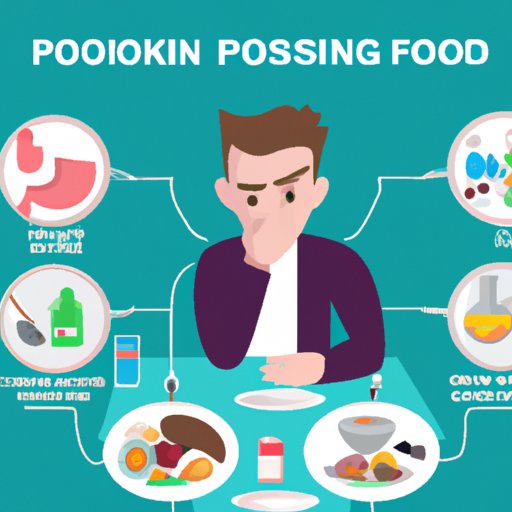
Introduction
Food poisoning is a common condition that results from eating contaminated food or drink. The symptoms of food poisoning can range from mild discomfort to severe illness, and they can last for a few hours to several days. This article aims to provide an in-depth analysis of how long symptoms of food poisoning last, the signs that require medical attention, remedies to ease the symptoms, ways to prevent it, and how to recover
Food Poisoning Symptoms and Duration
The symptoms of food poisoning can vary based on the type of foodborne illness. Common symptoms include nausea, vomiting, stomach cramps, and diarrhea. Symptoms can start within hours of consuming contaminated food or drink and can last up to ten days, depending on the severity of the condition and the individual’s overall health. Mild cases of food poisoning can last up to a day or two, while more severe conditions can last for several days.
When to See a Doctor for Food Poisoning
Some cases of food poisoning can be severe and require medical attention. Symptoms that require a doctor’s attention include severe dehydration, high fever, bloody stools, and prolonged diarrhea. Treatment for food poisoning usually involves replacing fluids lost through vomiting and diarrhea. In severe cases, doctors may prescribe antibiotics to fight off the infection. If you’re not sure whether your symptoms require medical attention, it’s best to consult your doctor.
Remedies for Soothing Food Poisoning Symptoms at Home
There are many home remedies that can help alleviate the symptoms of food poisoning. Drinking clear fluids such as water, herbal tea, or sports drinks can aid in hydration. Resting and not eating for a few hours can reduce symptoms. Consuming probiotics like yogurt, apple cider vinegar, and miso soup can also aid in recovery. However, it’s important to consult a doctor before trying any remedies, especially if you have a pre-existing health condition or are taking medication.
Preventing Food Poisoning: Safe Food Handling and Storage
Preventing food poisoning starts with proper food handling and storage. Always wash your hands before preparing food and avoid cross-contamination by storing meat and produce separately. Cook foods to their correct temperature, refrigerate perishable items, and discard any food that appears spoiled or has expired. It’s also essential to know how long various types of food can be safely stored before they should be thrown away. Following these guidelines can help reduce the risk of foodborne illness.
Food Poisoning Treatment and Recovery
After the onset of food poisoning symptoms, most people recover without medical intervention. The best treatment option is to stay hydrated and rested, as the body fights off the infection. Recovery time depends on the severity of the illness and the individual’s overall health. After recovering from food poisoning, it’s essential to take precautions to prevent getting ill again, such as practicing safe food handling and storage habits.
Conclusion
Food poisoning can be an uncomfortable, painful, and potentially dangerous condition. However, most cases can be treated at home and don’t require medical intervention. Treatment involves staying hydrated and getting plenty of rest. To avoid getting sick, it’s essential to practice safe food handling and storage guidelines. If you’re experiencing severe symptoms, don’t hesitate to seek medical attention.
If you are interested in learning more about preventing foodborne illness, visit the Centers for Disease Control and Prevention (CDC) website, where you can find information on safe food preparation and storage methods. Additionally, you can seek advice from your local public health department or your doctor if you have any questions about food safety.





